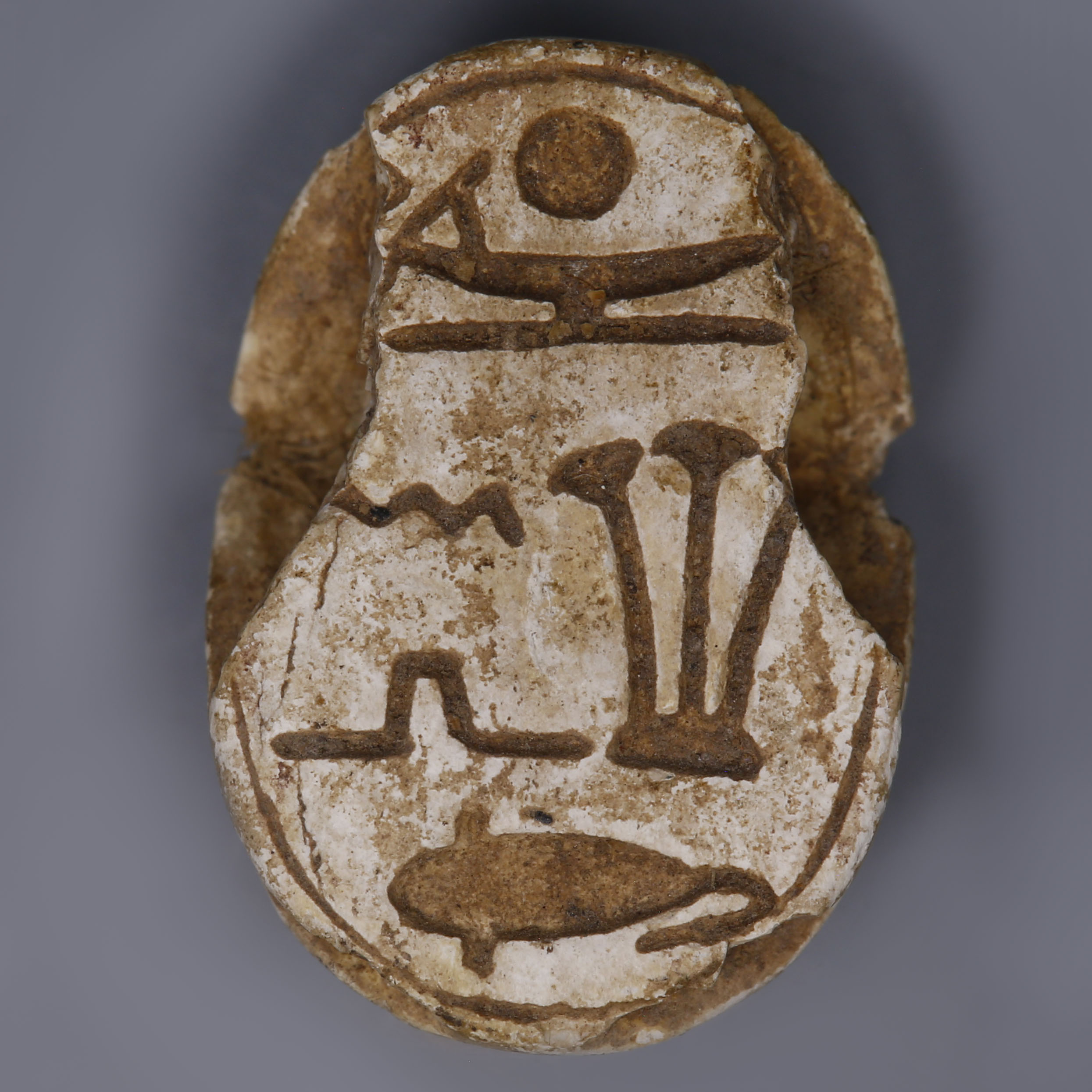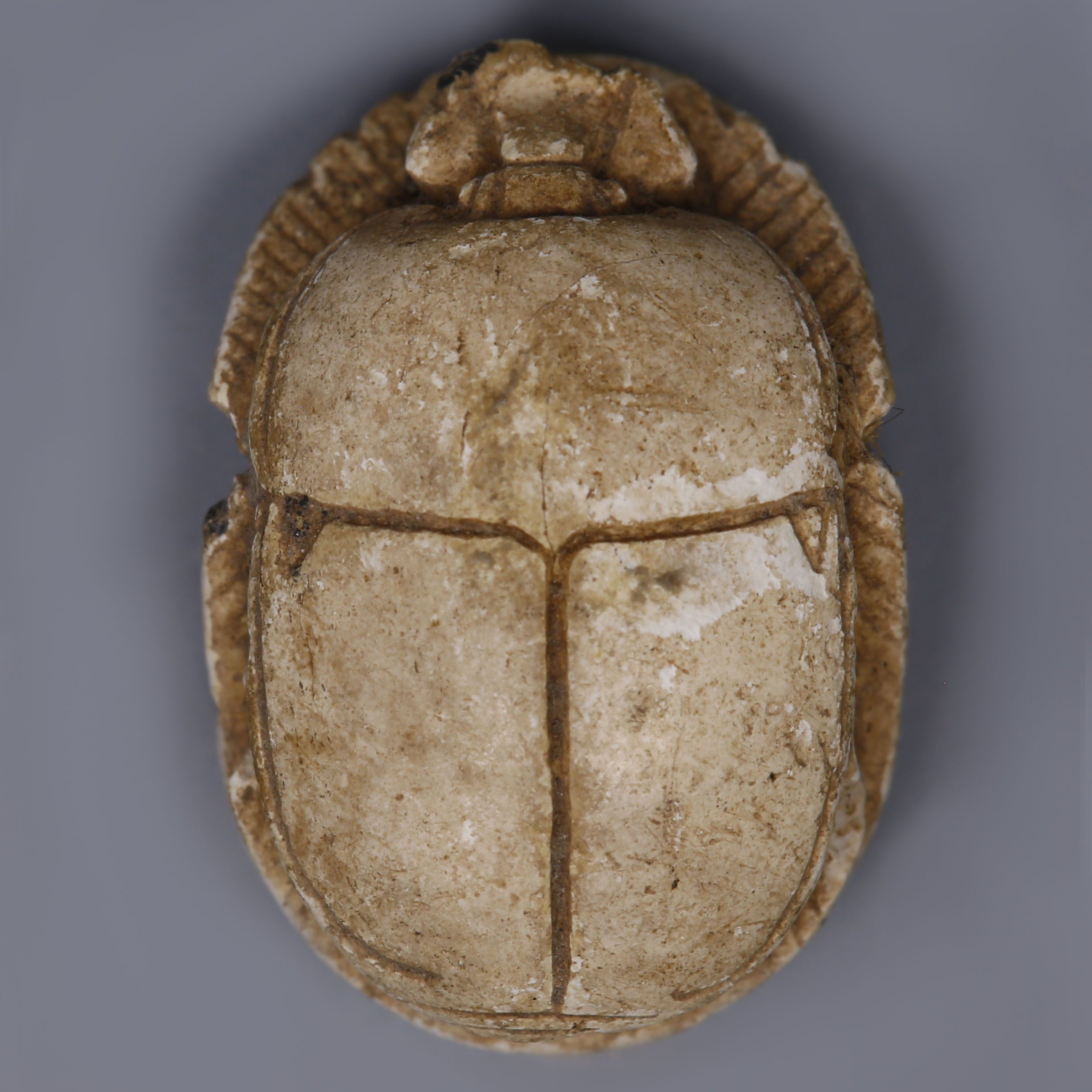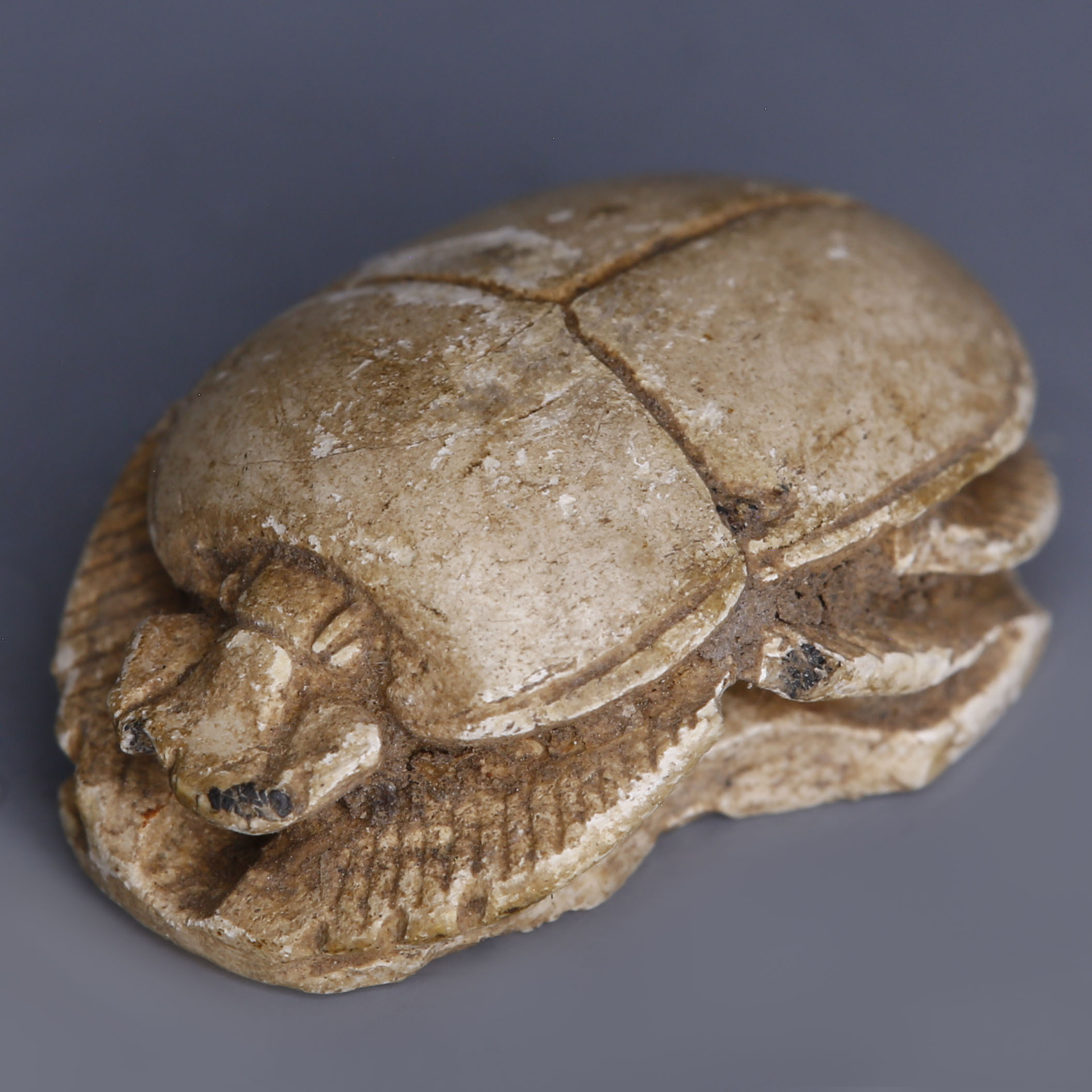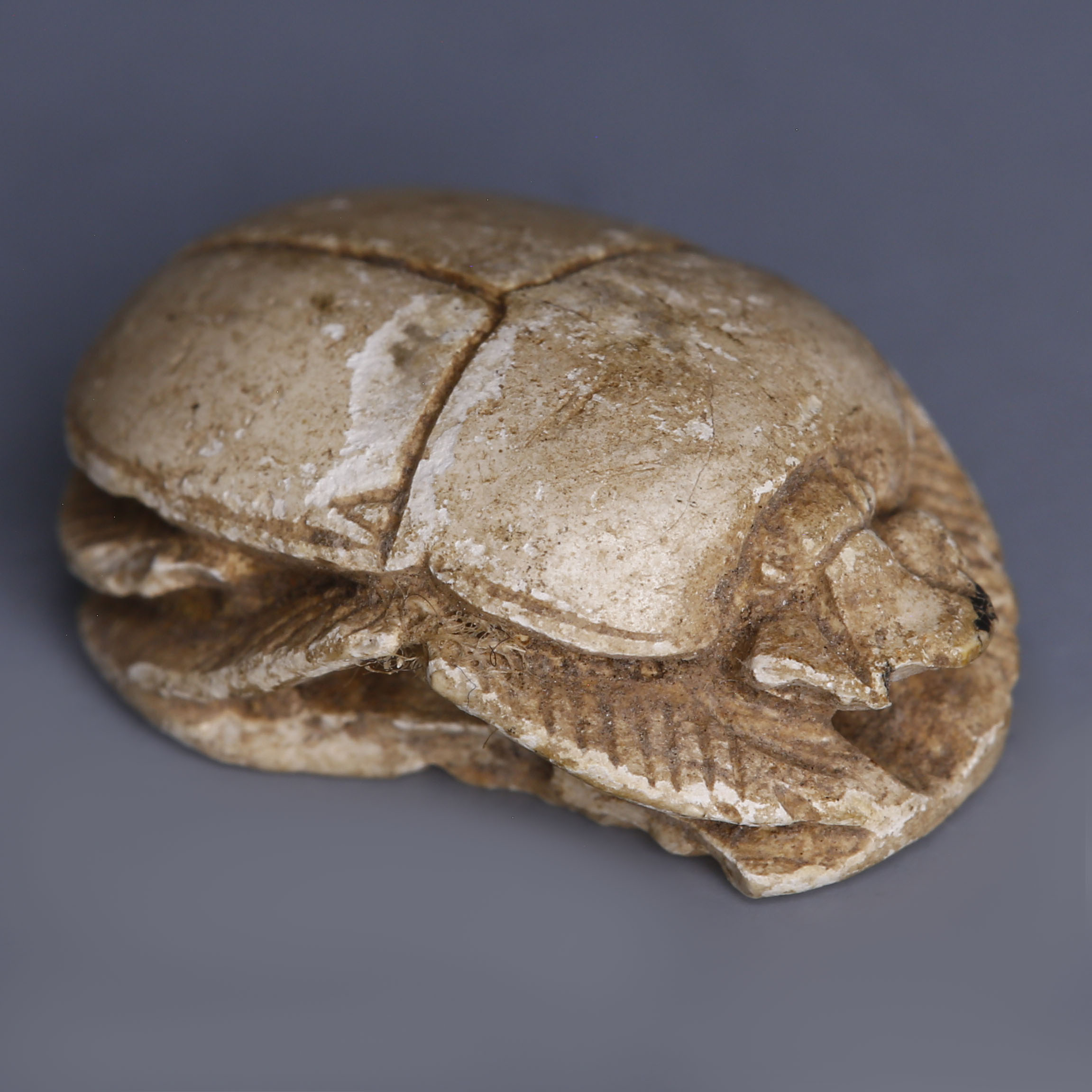The hieroglyphs upon this scarab represent a blessing to the god Amun, invoked by the wearer. It reassures the wearer that when ‘Amun-Re is behind me, do not fear’. The god is represented by the barque symbol at the top of the scarab, along with the sun-disk. Scarabs such as this, asking for protection from a specific god were popular in the late New Kingdom Period and Third Intermediate Period.
The Egyptian god, Amun-Ra, was a highly important deity in the Egyptian pantheon. Originally, he was worshipped as two gods, the creator of the universe, Amun, and the sun-god, Ra. He gains national importance after the defeat of the Hyksos at Thebes in the 16th century and it is from this date we see a combination of the two gods. As his position grew, Amun-Ra’s worship was almost monotheistic in nature, with the other gods considered manifestations of him. So great was his influence that he was identified with the Greek god Zeus from the Ptolemaic period, to form Zeus Ammon. Alexander the Great claimed divine descent as the son of Amun.
To find out more about Ancient Egyptian amulets please see our relevant blog post: Egyptian Amulets and their Meanings.



